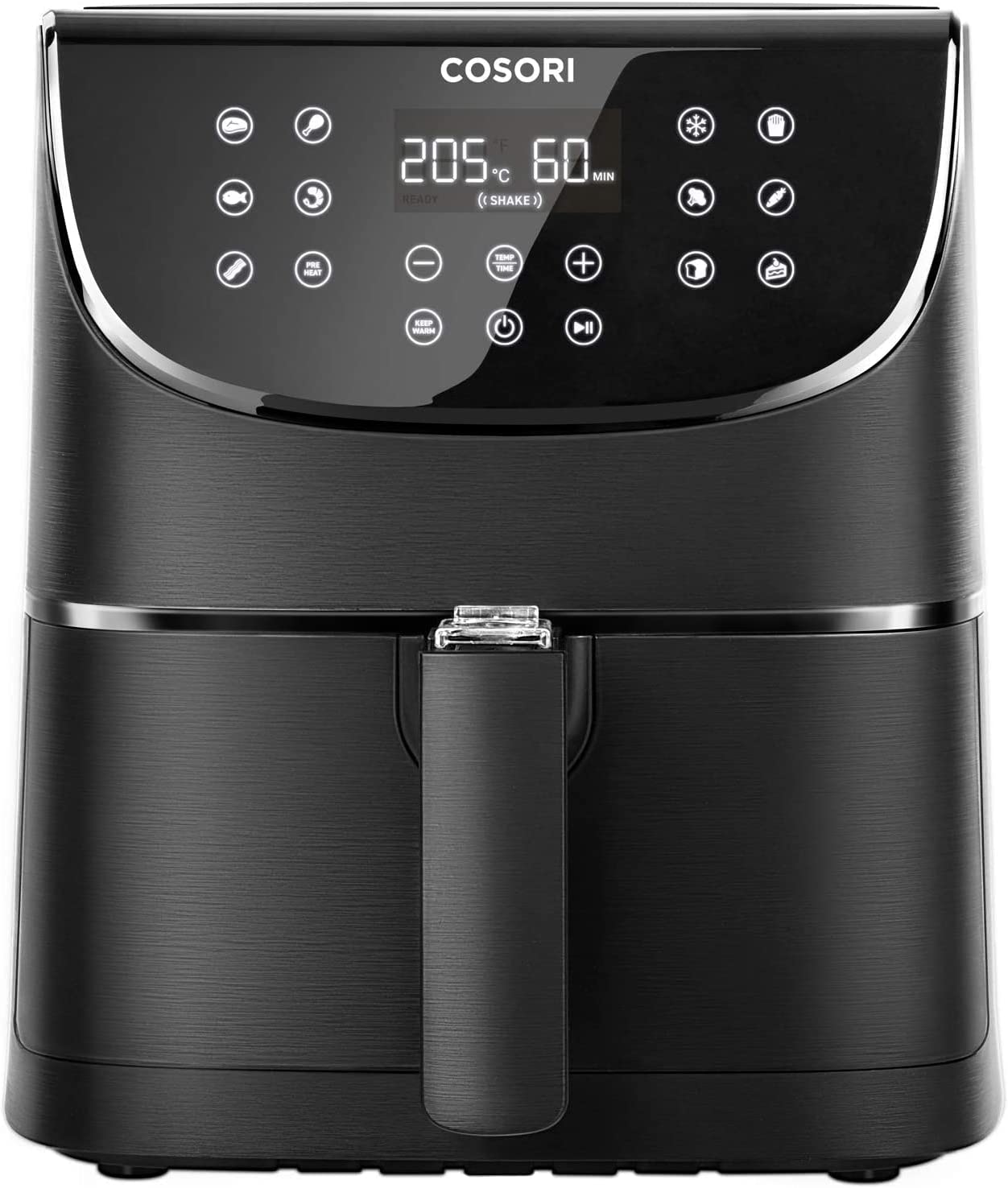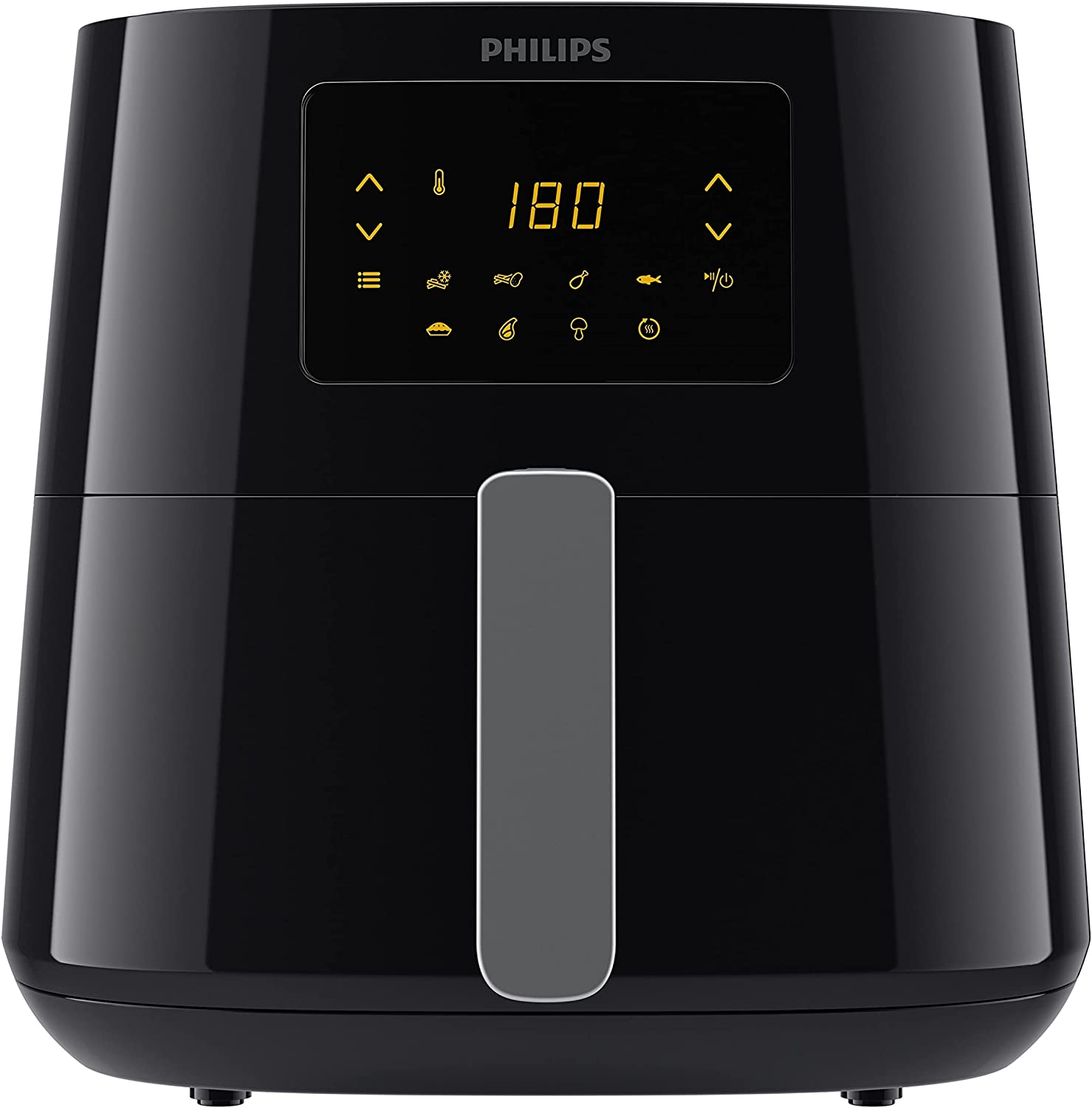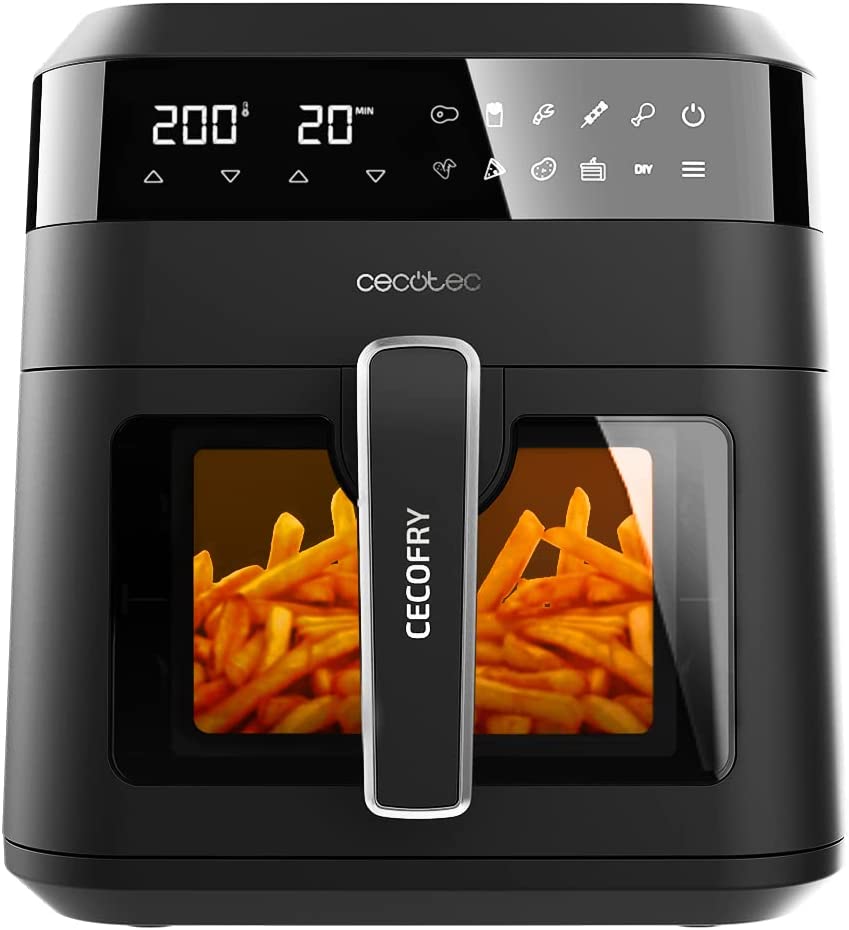Let’s be real for a second—between work, errands, and trying to keep life semi-organized, nobody has time to babysit a stovetop. And yet, eating healthier still feels like one of those never-ending goals that always ends in a bowl of cereal or takeout. That’s why air fryers are basically our lifeline to home-cooked food without the stress. But then comes the real question: which one do you actually buy?
You’ve probably heard people rave about Philips, seen the minimalist designs of Xiaomi, gotten tempted by Cosori’s sleek options, or stumbled across Cecofry while comparing prices. They all promise crispy fries with zero oil and golden chicken in 15 minutes—but not all of them deliver the same way.
We’ve spent weeks flipping nuggets, testing frozen croquettes, burning the occasional empanada, and figuring out what’s hype and what’s not. Here’s the real breakdown of how these four brands measure up when it comes to what matters in your daily routine.
Who’s serious about air frying and who’s just passing by?

You can feel it in the catalog. Philips and Cecofry treat air fryers like a major business, not just a kitchen gadget. Philips alone has over 30 models in their Airfryer lineup, while Cecofry (from Cecotec) throws every variation imaginable at you—big, small, digital, analog, you name it. They’re clearly in it for the long haul.
Cosori, though more selective, offers a compact but thoughtful lineup—about seven well-rounded models that cater to most home setups. It’s a brand that feels like it knows its audience: families, meal-preppers, and people who need consistent performance.
Xiaomi? Well, it’s there, but let’s not pretend they’re putting their soul into this category. With only one or two models, it’s more like a smart side project than a core offering.
In short, Philips and Cecofry go deep, Cosori plays it smart, and Xiaomi dips a toe in.
What’s under the hood: the tech that does the actual cooking
Here’s where the science meets your hunger. All four use hot air circulation to cook food with little or no oil, but how that air moves? That’s the twist.
Philips uses its own Rapid Air system, which doesn’t just swirl the air—it spins it in a star-shaped pattern, making sure heat hits every angle. It’s not just a gimmick—it genuinely cooks more evenly, especially with layered or stacked food like chicken wings or potato wedges.
Cosori and Xiaomi use 360º hot air circulation, which works well too—just a bit more standard in execution. You still get that golden crunch, especially for single-layered items. Cecofry’s “PerfectCook” system is basically the same thing but with a catchy name.
When it comes to power, the difference gets sharper. Cosori and Philips hover around 1700 to 2000 watts, which helps them preheat quickly and cook without needing double the time. Xiaomi and Cecofry stay lower, often under 1500 watts, and you can feel it. Cooking thicker or frozen food? You’re going to wait longer.
Higher wattage plus better airflow = crispier food, faster. Philips wins here.
Can it handle a hungry crowd—or just solo snacks?
Let’s talk size. Not all air fryers were built to feed a family.
Philips’ 3000 XL Airfryer gives you 6.2 liters, which is massive. Cecofry hits close with 6 liters, and if you’re batch-cooking or feeding four or more, this size saves you time and sanity.
Cosori sits right in the sweet spot with 5.5 liters, ideal for couples or small families who don’t want to feel like they’re playing Tetris with their chicken thighs.
Xiaomi offers just 4 liters. That’s… tight. It works for one or two people, maybe three if you’re strategic. But for anyone who wants leftovers or does weekly prep? You’ll outgrow it fast.
If capacity matters—and it usually does—Philips and Cecofry give you space to breathe.
Presets, modes, and how many buttons you’ll actually use
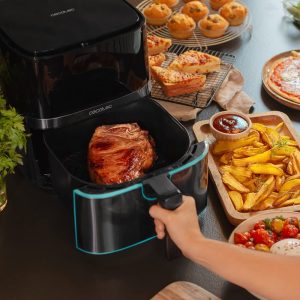
Let’s be honest—most of us use the same two or three presets once we find what works. But having options? It’s nice.
Cosori and Xiaomi both offer 11 presets, which is generous and covers everything you need: fries, veggies, frozen stuff, chicken, shrimp, desserts. Cecofry offers nine, Philips settles on seven, but makes those seven super efficient and easy to use.
What sets things apart are the extra functions. Cosori and Philips let you defrost and keep food warm, which is surprisingly helpful when life gets in the way of dinner. Xiaomi throws in a dehydration mode, which is unexpected and kind of fun—you can dry fruit or herbs like you’re in a Pinterest kitchen.
Cecofry? No extras. It’s the basics—no reheating, no defrosting.
All four allow full manual control too—you can adjust time and temperature with ease, which is essential once you start experimenting.
Cosori and Xiaomi win on variety. Philips wins on simplicity. Cecofry keeps it minimal.
Buttons, dials, and the drama of user interfaces
We’re not saying an interface can make or break an air fryer, but… yeah, it kind of can.
Cosori, Philips, and Cecofry all use clean, bright touchscreens. Icons are intuitive, controls are quick, and you don’t need a manual to figure out what’s what. Everything’s clear and tactile. You touch, it responds.
Xiaomi takes a weird route. No touchscreen—just a rotary dial. It looks elegant, sure, but there’s a learning curve and some guesswork involved. You’re turning, clicking, trying to remember what setting was where. It’s not ideal when you’re hangry and want fries now.
There’s also the matter of visibility. Cecofry and Xiaomi include a viewing window on certain models, which sounds minor but actually lets you peek in without interrupting the cooking cycle. Philips and Cosori skip that—you have to rely on the timer and hope you didn’t burn your egg rolls.
Smart controls? Xiaomi includes app support across the board, naturally. It’s Xiaomi—they’re all about that smart home vibe. Philips, Cosori, and Cecofry only add app support to specific models, usually labeled “Smart” or “Connected.”
For easy controls and modern design, Cosori and Philips feel great. For smart home fans, Xiaomi wins—if you can handle the wheel.
Safety, durability, and the clean-up reality check
Let’s get practical. If you’re going to use it daily, you want something safe, sturdy, and easy to clean.
Philips uses thicker, more premium materials, and you feel it. It’s heavier, more solid, and built to last. Cosori and Cecofry hit a nice middle ground—they feel strong but light enough to move around easily.
Xiaomi is the most compact, but also feels a little less tough. It’s not flimsy, just less substantial.
All four come with auto shut-off, overheat protection, and cool-touch exteriors, which means you’re not risking scorched fingers. And cleanup? Cosori, Philips, and Xiaomi include dishwasher-safe parts. Cecofry doesn’t always guarantee that.
If you hate scrubbing trays—and let’s be real, who doesn’t—that dishwasher-safe tag is gold.
Recipes, manuals, and not feeling completely lost
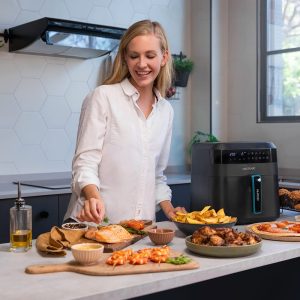
Some brands get that you don’t just want an appliance—you want ideas.
Cosori includes a printed recipe book, and it’s actually good. Detailed, easy to follow, and full of dishes you’ll actually make.
Philips and Xiaomi guide you to apps or digital content, which is fine, but requires more digging. Cecofry gives you less guidance, so unless you already know what you’re doing, you’ll end up Googling “how long to cook frozen spring rolls” more than you’d like.
If you’re a beginner or want to explore, Cosori is the most helpful.
So… which one should end up in your kitchen?
We didn’t expect to say this, but Philips kind of crushes it. Its heating tech, size, power, and overall build just feel a notch above, even if it doesn’t win in flashy extras. The results are just more reliable—crispier fries, juicier wings, better browning without overcooking.
Cosori is right behind it—honestly, for most households, it’s a killer choice. It balances everything beautifully: design, presets, size, price. If Philips is the high-end choice, Cosori is the smart everyday one.
Cecofry is fine—but it’s the safest, least exciting option. No big flaws, no big wins. Great if you just want a basic fryer and you’re not fussy.
Xiaomi? Fun, sleek, but niche. It feels like a gadget, not a kitchen tool. If you’re into automation, smart homes, and you don’t cook for many people, it’ll fit. But for power, performance, or ease of use? It’s not the frontrunner.
Go with Philips if you want the best cook. Go with Cosori if you want the best balance. That’s where the heat is.

